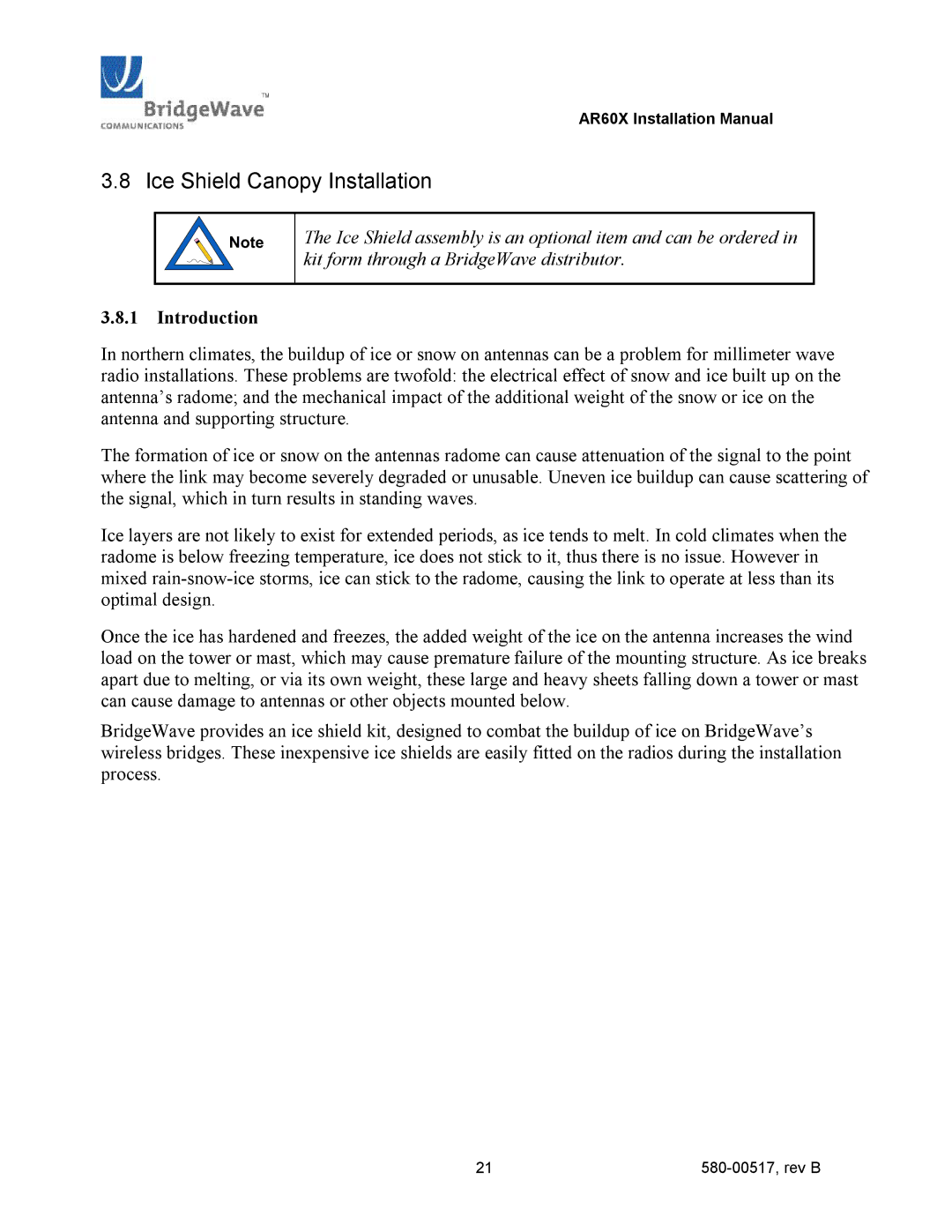
AR60X Installation Manual
3.8 Ice Shield Canopy Installation
The Ice Shield assembly is an optional item and can be ordered in kit form through a BridgeWave distributor.
3.8.1 Introduction
In northern climates, the buildup of ice or snow on antennas can be a problem for millimeter wave radio installations. These problems are twofold: the electrical effect of snow and ice built up on the antenna’s radome; and the mechanical impact of the additional weight of the snow or ice on the antenna and supporting structure.
The formation of ice or snow on the antennas radome can cause attenuation of the signal to the point where the link may become severely degraded or unusable. Uneven ice buildup can cause scattering of the signal, which in turn results in standing waves.
Ice layers are not likely to exist for extended periods, as ice tends to melt. In cold climates when the radome is below freezing temperature, ice does not stick to it, thus there is no issue. However in mixed rainsnowice storms, ice can stick to the radome, causing the link to operate at less than its optimal design.
Once the ice has hardened and freezes, the added weight of the ice on the antenna increases the wind load on the tower or mast, which may cause premature failure of the mounting structure. As ice breaks apart due to melting, or via its own weight, these large and heavy sheets falling down a tower or mast can cause damage to antennas or other objects mounted below.
BridgeWave provides an ice shield kit, designed to combat the buildup of ice on BridgeWave’s wireless bridges. These inexpensive ice shields are easily fitted on the radios during the installation process.
21 | 58000517, rev B |
